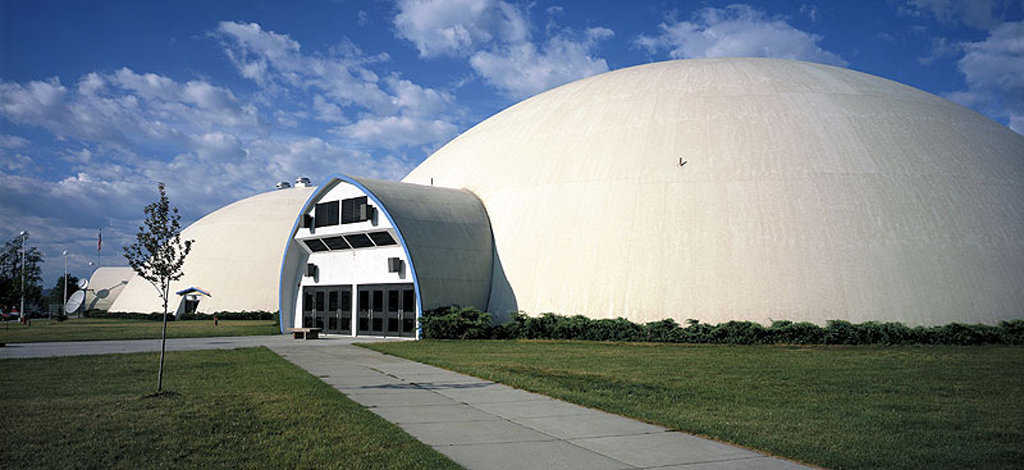A mess
The Emmett High School class of 1987, celebrating their ten-year class reunion this summer, will tell you that their final years of school were, to put it mildly, very uncomfortable.
At that time, room restraints in the old high school (now the Emmett Middle School) forced double shifts to accommodate the student load. Even though Gem County is among the smallest of Idaho’s 44 counties, many of these young people traveled 30-40 miles one way to get to school each day. Those who chose to participate in sports or extracurricular activities often found themselves putting in outrageously long days.
“It was a mess,” recalls then vice principal Tony Villanueva, now retired. “Academically, our kids were having a hard time. The kids that were involved in high school activities would come to school at 6:30 in the morning, and were supposed to go home at 12:30 in the afternoon. Well, if they lived up in Ola or Sweet (in the extreme northern parts of our rural county), and they had practice at three or three-thirty, regardless of whether it was band or athletics or drama, they just had to stay. So, they got through about five or six o’clock and by the time they got home and got something to eat, they were putting in thirteen- or fourteen-hour days.”
And it really showed academically. “Kids and teachers alike were consistently tired and we were really looking for a change.”
Change is good
The necessary change came to Emmett in the form of Monolithic Dome’s first school buildings. Villanueva admits that, in 1987, “Just about anything would have been an improvement.” But the domes offered a reasonably priced, authentically unique alternative to so-called stick-frame buildings. In addition, dome design would provide savings in both maintenance and utility costs.
Ironically, the students who pushed the hardest to get the domes accepted and constructed did not graduate from them. Most will tell you, however, that they did not want another class to be put through what they endured, even if the immediate pay-off did not benefit their class directly. One year later, the class of 1988 proudly gathered their diplomas inside the gym of the gleaming white domes, the first class to claim that victory.
Promises kept and expectations met
Ten years later, the domes have lived up to the promises made by Monolithic Constructors, Inc. Villanueva says, “It’s a very quiet building, when you compare it to anything else in our district. You come in and see the foyer, and it really looks like you’re entering a mall. Most of the people who visit here have really been impressed with the domes, they really have.”
Classrooms in the domes, he says, are bigger than those in other, “normal” structures, which has proved to be enormously advantageous. One of the most frequent misconceptions concerning the domes has centered around this issue in particular. Most people assume, because of the curvature of the outside construction, that the building encloses a considerable amount of unusable, wasted space. Villanueva says that this is just not so. “We got more space out of a building than we thought we were going to have. It’s not crowded at all. It has proven very functional in that way. Even though some of the classrooms are pie shaped, they are roomier than anything else we looked at.”
Comparing utility costs
Assistant Superintendent of Schools, Ron Noble, offered several comparisons to highlight the domes’ performance.
Using Sweet/Montour Elementary School as an example, Noble said the utility costs alone have proved exceedingly attractive. Sweet/Montour is a conventional building serving about 62 students in northern Gem County (Emmett High School this year supported close to 900 students). Built in 1973, the elementary school is attractive and functional, and sits in its own verdant, picturesque valley, but is quite expensive when stacked up against Emmett High School.
The domes provide in excess of 110,00 square feet of enclosure, while Sweet/Montour measures in at about 27,000 square feet. During the 1995-96 school year, power at Sweet/Montour totaled just under $9,000; during the same period, the high school power consumption came to $10,100. [Ed. Note: That is 33.3 cents per square foot for the elementary school versus 9.2 cents per square foot in the dome.]
Diplomas with domes
If you ask newcomers to the valley what impresses them most about the area, they will nearly unanimously comment on Squaw Butte, a mountainous volcanic outcropping at the head of the valley, the awe-inspiring view from the highway 16 atop Freeze-out Hill which serves as the main artery in and out of the valley, and the Emmett High School domes. And almost always in exactly that order.
So proud are the students who today populate the building that for the past decade they have insisted that a likeness of the domes be imprinted on their diplomas.
Emmett has traditionally enjoyed a fairly isolated, quiet rural population. Although the numbers of those settling in the valley continue to swell as our nearby cities push their boundaries ever outward, administrators anticipate that Emmett High School will continue to serve the community for another decade before expansion is required.
And as that growth continues, so will the numbers of Emmett High School students who, just as those celebrating their ten-year reunion this summer insistently do, consider the domes an integral part of what makes life in Gem County incomparable to any other community.
Note: Jim Nau, Managing Editor of the Messenger Index newspaper in Emmett, Idaho. Except for the subtitles added for the current presentation, this article was first published in 1997. Prices quoted are for that time period.
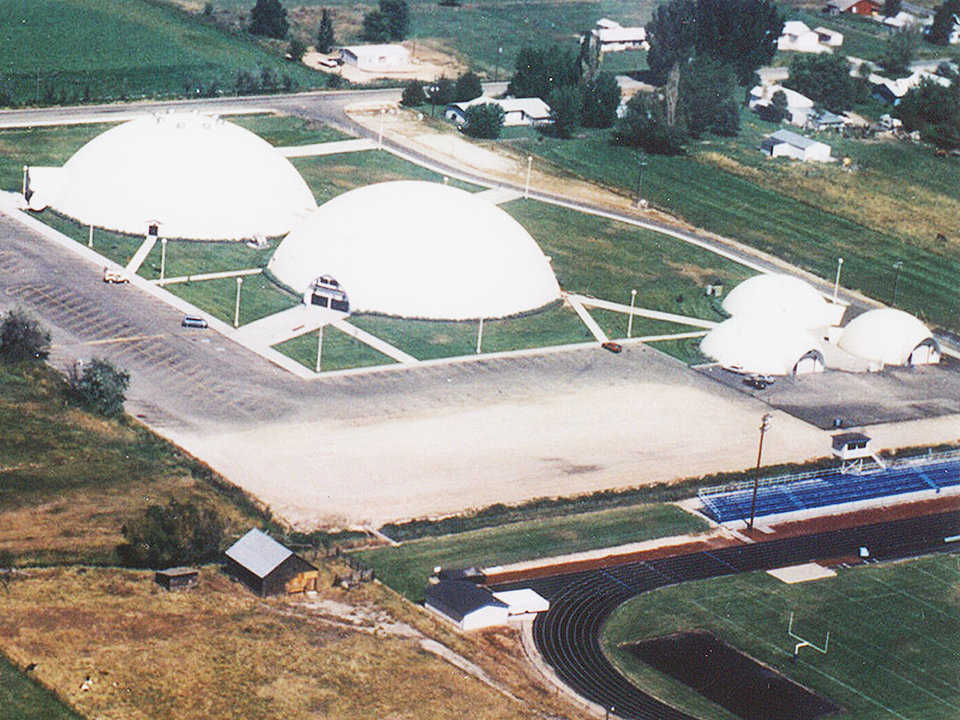
Five Monolithic Domes — Emmett’s 900 students use two 180-foot diameter domes that house classrooms and a gymnasium. The three smaller domes function as woodworking, metal and auto shops.
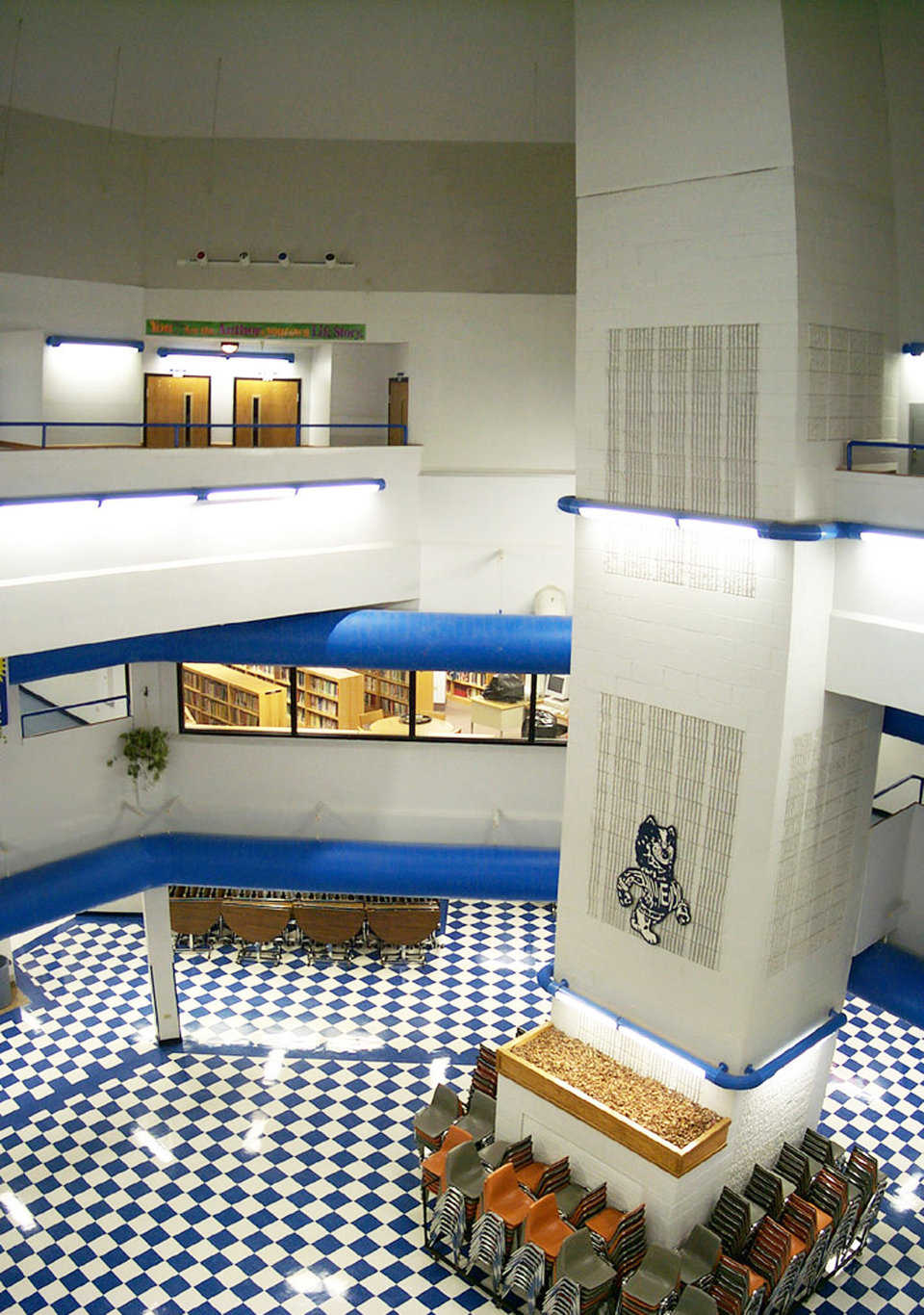
Commons Area and Atrium — Three floors of classrooms surround a five-story tall atrium. A 25’ diameter artificial skylight creates a daylight atmosphere during all weather conditions.
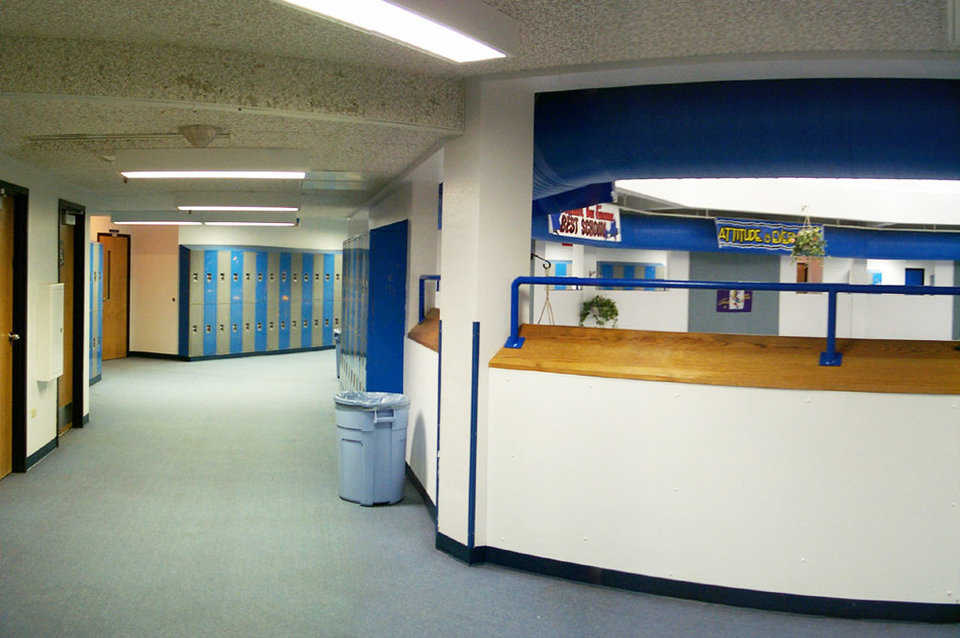
Receiving Area and Corridor — They provide easy access to classrooms and offices.
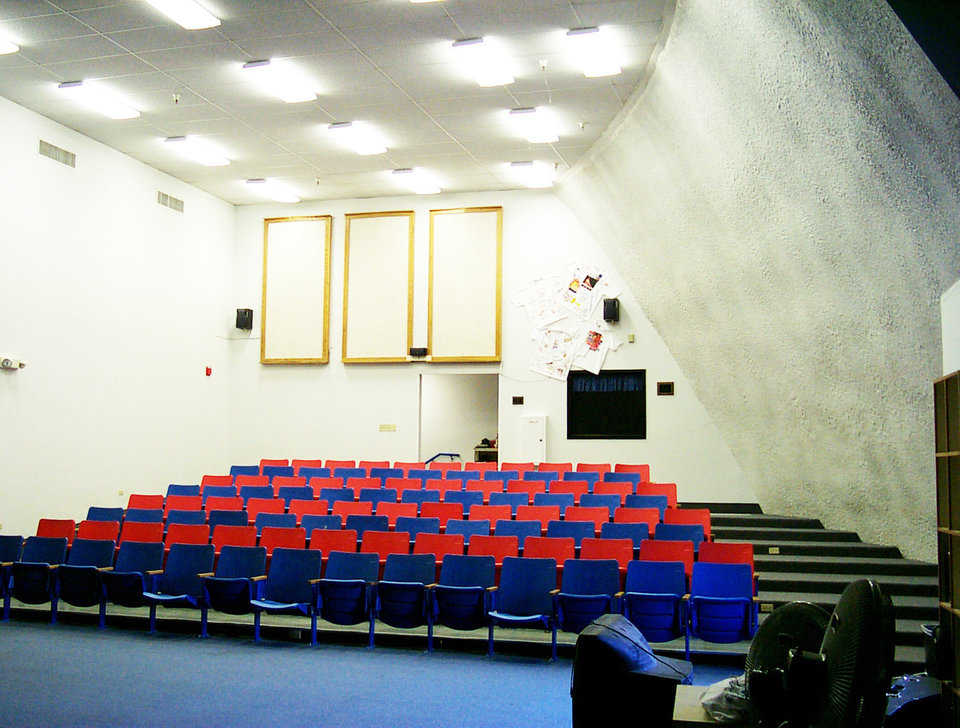
Theater — In 1988, the first class of Emmett High seniors held their graduation ceremony in a Monolithic Dome. Their diplomas are imprinted with the likeness of a dome.
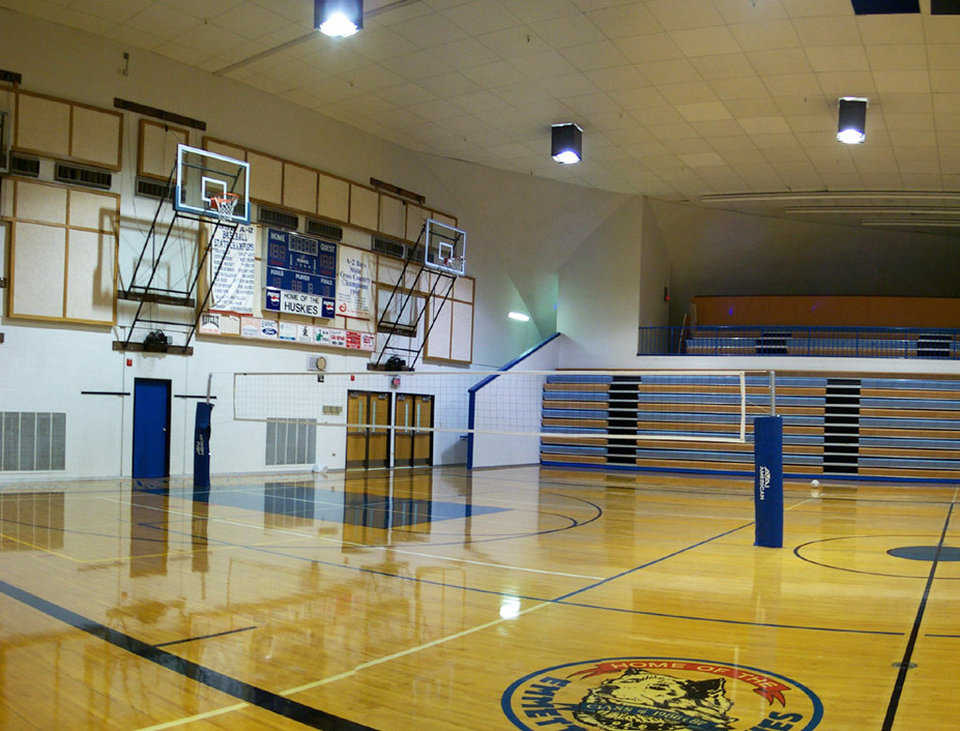
Gymnasium — This double-wide gym can seat 3,000 for graduation ceremonies. It also has a weight room, wrestling room, locker rooms, offices, concessions and a 350 seat theater.
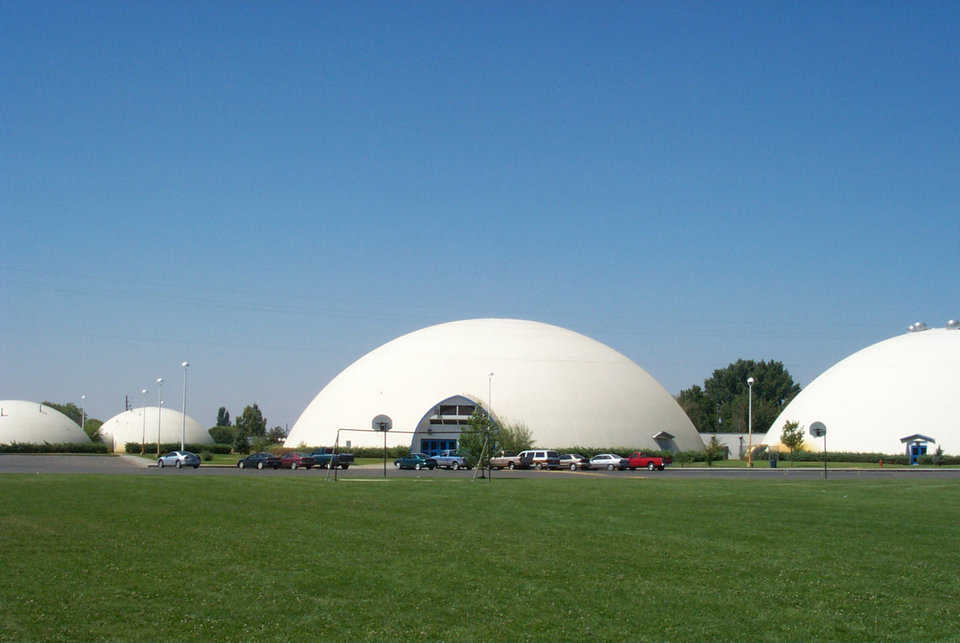
Energy-efficient Domes — In 1997, Superintendent Ron Noble reported that the Monolithic Domes save at least 66 percent in energy costs, over the district’s other conventional schools.
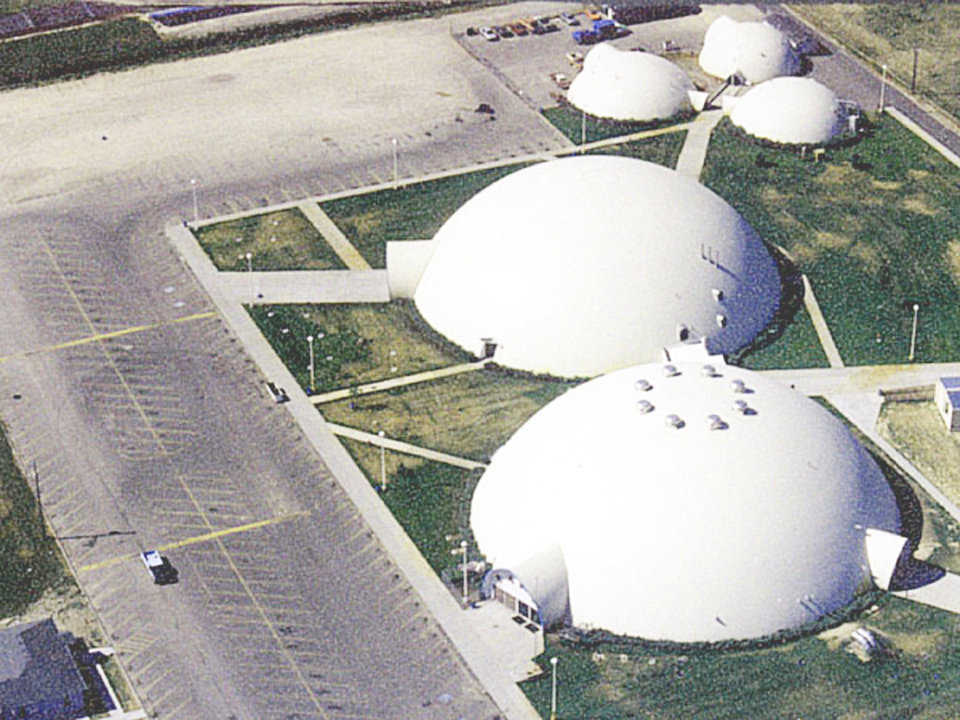
Aerial View — School officials chose Monolithic Domes because they offered a reasonably priced, authentically unique alternative to so-called stick-frame buildings.
